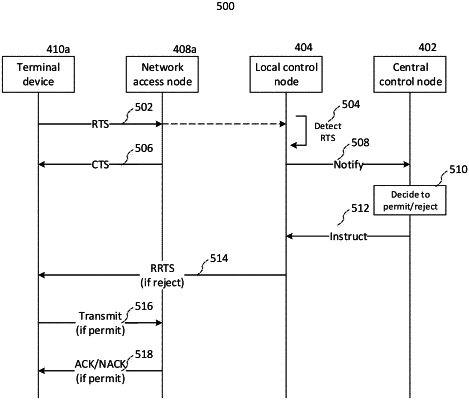| CPC H04W 88/12 (2013.01) [H04W 48/10 (2013.01); H04W 74/0816 (2013.01); H04W 76/18 (2018.02); H04W 16/14 (2013.01)] | 12 Claims |

|
1. A control node for operating in a network with shared spectrum, the control node comprising:
one or more processors configured to execute program code to:
identify a spectrum allocation policy;
implement a rejection strategy for managing contention-based access to a shared channel by one or more transmitters based on the identified spectrum allocation policy; and
transmit or trigger transmission of a transmission request rejection in response to a transmission request by a first transmitter of the one or more transmitters according to the rejection strategy;
wherein the one or more processors are configured to implement the rejection strategy by determining a current collision probability of transmission on the shared channel that is higher than a target collision probability, and determining a rejection percentage that specifies a percentage of transmission requests for the shared channel to be rejected; or
wherein the one or more processors are configured to implement the rejection strategy by assigning a first set of the one or more transmitters to first timing group and assigning a second set of the one or more transmitters to a timing second group, and assigning the first timing group with a first set of timing resources during which the first timing group is permitted to access the channel and assigning the second timing group with a second set of timing resources with which the second timing group is permitted to access the channel; or
wherein the one or more processors are configured to implement the rejection strategy by identifying a first channel occupancy set of the one or more transmitters that have a higher channel occupancy rate than a second channel occupancy set of the one or more transmitters; or
wherein the one or more processors are configured to implement the rejection strategy to manage contention-based access to the shared channel based on determining a metric that quantifies a level of congestion or collisions of the shared channel.
|